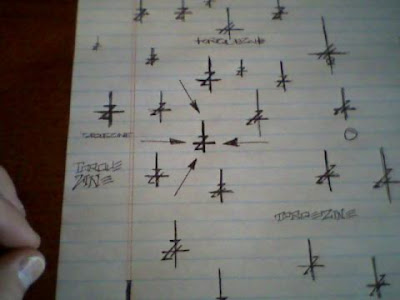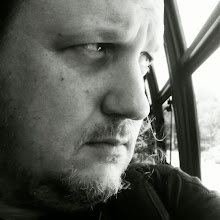Thursday, April 30, 2009
Wednesday, April 29, 2009
Monday, April 27, 2009
Saturday, April 25, 2009
Friday, April 24, 2009
Wednesday, April 22, 2009
Monday, April 20, 2009
Friday, April 17, 2009
Thursday, April 16, 2009
Wednesday, April 15, 2009
Monday, April 6, 2009
Xposition
 ENTARTETE KUNTS
ENTARTETE KUNTSJune 4 - June 30
Artists Reception: June 19
The Life Gallery
625 NW Everett Street
Portland, Oregon 97209
(((03)))
Thursday, April 2, 2009
Encrer la Tache
 April 2, 1922: Swiss psychiatrist Hermann Rorschach dies. He leaves behind a widely known, but no longer widely used, test for diagnosing mental illness with inkblots.
April 2, 1922: Swiss psychiatrist Hermann Rorschach dies. He leaves behind a widely known, but no longer widely used, test for diagnosing mental illness with inkblots.His father was a painter and art teacher, and the young Rorschach contemplated a career as an artist. In fact, he spent so much time drawing that his high school buddies nicknamed him Kleck, from the German verb "to daub," or the noun for "inkblot."
Rorschach eventually settled on medicine, but not on a single med school. He studied in Zurich and Bern, Switzerland, and in Berlin and Nuremberg, Germany. His specialty was psychiatry, but he retained his interest in art ... and its relationship to the mind. By 1913, he had already published papers on analyzing mental patients' artwork as an avenue of insight into their troubled psyches.
A mid-19th century German doctor had published a popular book of poems, each of which was inspired by an accidental inkblot, and Rorschach was likely aware of this. What's more, French psychologist Alfred Binet (yes, he of the standardized intelligence test) had experimented with inkblots as a creativity test.
Rorschach learned in 1917 that fellow Swiss shrink Szyman Hens was studying people's fantasies by using inkblot cards. Rorschach believed that what different people perceived in ambiguous inkblots would reveal differences in their basic personality structure. So, he began his own inkblot work the next year, asking patients, "What might this be?"
It might seem obvious (at least in these psychologically informed days) that a person who repeatedly sees people fighting in a series of inkblots might have a different mindset from someone who keeps on seeing people dancing, or people performing sexual acts. Or that someone who always (or mostly) sees people would differ psychologically from someone who sees only birds, or mainly animals and rarely people, or someone persistently seeing inanimate objects rather than living things.
 That would be sort of a general projective test indicative perhaps only of a person's mood at the moment, or perhaps of her or his underlying psyche, depending on the interpretative skills — and biases — of the psychiatrist. But Rorschach, with the characteristic inclination of a nation of watchmakers, set out to devise a precise system for scoring his test, based on whether and the extent to which a test subject was interpreting movement, color or form.
That would be sort of a general projective test indicative perhaps only of a person's mood at the moment, or perhaps of her or his underlying psyche, depending on the interpretative skills — and biases — of the psychiatrist. But Rorschach, with the characteristic inclination of a nation of watchmakers, set out to devise a precise system for scoring his test, based on whether and the extent to which a test subject was interpreting movement, color or form.After studying 300 mental patients and 100 control subjects, he wrote a book on the new system, Psychodiagnostics. Although he had served as vice president of the Swiss Psychoanalytic Society, Rorschach had trouble getting it published. When it appeared in 1921, it attracted little notice at first.
But word spread, and the Rorschach test was eventually included
 in the arsenal of tests wherever psychiatry and therapeutic psychology were being practiced. Over the years, new and complicated systems of scoring evolved, and competing schools of therapy vigorously disputed one another's methods. The scoring systems are not as widely used now as they once were, because of continuing doubts over their reliability.
in the arsenal of tests wherever psychiatry and therapeutic psychology were being practiced. Over the years, new and complicated systems of scoring evolved, and competing schools of therapy vigorously disputed one another's methods. The scoring systems are not as widely used now as they once were, because of continuing doubts over their reliability.The inkblots, however, became a staple of the popular-culture view of psychiatry and mental illness, appearing in countless films and TV shows. Most recently, the ambiguous inkblots have graced the masked face of the character Rorschach in the graphic novel and now movie and videogame, Watchmen.
All this, alas, was not to come in Rorschach's own lifetime. The year after he published Psychodiagnostics, he died of appendicitis. He was only 37.
(WM) (inkblot examples by Matt Amyx)

















